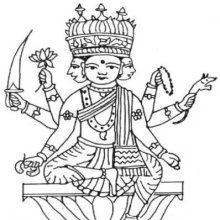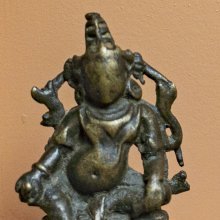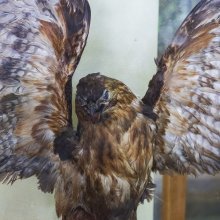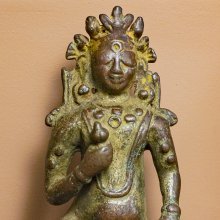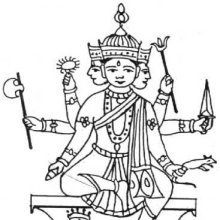Mongoose: 2 definitions
Introduction:
Mongoose means something in Buddhism, Pali, Hinduism, Sanskrit. If you want to know the exact meaning, history, etymology or English translation of this term then check out the descriptions on this page. Add your comment or reference to a book if you want to contribute to this summary article.
Images (photo gallery)
(+12 more images available)
In Hinduism
Ayurveda (science of life)
Toxicology (Study and Treatment of poison)
Source: Shodhganga: Kasyapa Samhita—Text on Visha ChikitsaThe Mongoose is denoted by the Sanskrit term Nakulī and is mentioned as one of the sworn enemies of Snakes (Sarpas), as taught in the Kāśyapa Saṃhitā: an ancient Sanskrit text from the Pāñcarātra tradition dealing with both Tantra and Viṣacikitsā (Toxicology).—The Kāśyapasaṃhitā (verse IV.33) talks about the sworn enemies of Sarpas (snakes): Boar, lightning, peacock, eagle, cat, nakulī (mongoose) and wolf are its sworn enemies.

Āyurveda (आयुर्वेद, ayurveda) is a branch of Indian science dealing with medicine, herbalism, taxology, anatomy, surgery, alchemy and related topics. Traditional practice of Āyurveda in ancient India dates back to at least the first millenium BC. Literature is commonly written in Sanskrit using various poetic metres.
In Buddhism
Tibetan Buddhism (Vajrayana or tantric Buddhism)
Source: academia.edu: The Structure and Meanings of the Heruka MaṇḍalaThe Mongoose (animal) is associated with the Yoginī (female deity) named Nakulī, being situated in the Medinīcakra, according to the 10th century Ḍākārṇava-tantra: one of the last Tibetan Tantric scriptures belonging to the Buddhist Saṃvara tradition consisting of 51 chapters.—Accordingly, the medinīcakra refers to one of the three divisions of the dharma-puṭa (‘dharma layer’), situated in the Herukamaṇḍala. The 36 pairs of Ḍākinīs [viz., Nakulī] and Vīras are yellow in color; the shapes of their faces are in accordance with their names [e.g., Mongoose]; they have four arms; they hold a skull bowl, a skull staff, a small drum, and a knife.

Tibetan Buddhism includes schools such as Nyingma, Kadampa, Kagyu and Gelug. Their primary canon of literature is divided in two broad categories: The Kangyur, which consists of Buddha’s words, and the Tengyur, which includes commentaries from various sources. Esotericism and tantra techniques (vajrayāna) are collected indepently.
See also (Relevant definitions)
Full-text (+139): Nakula, Iracakiri, Hrika, Mungusa, Nevala, Munka, Kirabekku, Pavuguli, Uragabhoji, Ahibhukku, Nakul, Babhru, Nakulanirjita, Noli, Vishajita, Nakuli, Momguri, Mumgusi, Muguri, Pavuni.
Relevant text
Search found 55 books and stories containing Mongoose; (plurals include: Mongooses). You can also click to the full overview containing English textual excerpts. Below are direct links for the most relevant articles:
Lalitopakhyana (Lalita Mahatmya) (by G.V. Tagare)
Folk Tales of Gujarat (and Jhaverchand Meghani) (by Vandana P. Soni)
Chapter 14 - Noli Nom < [Part 3 - Kankavati]
Folklore of the Santal Parganas
Kathasaritsagara (the Ocean of Story) (by Somadeva)
Rig Veda (translation and commentary) (by H. H. Wilson)
The Indian Buddhist Iconography (by Benoytosh Bhattachacharyya)
